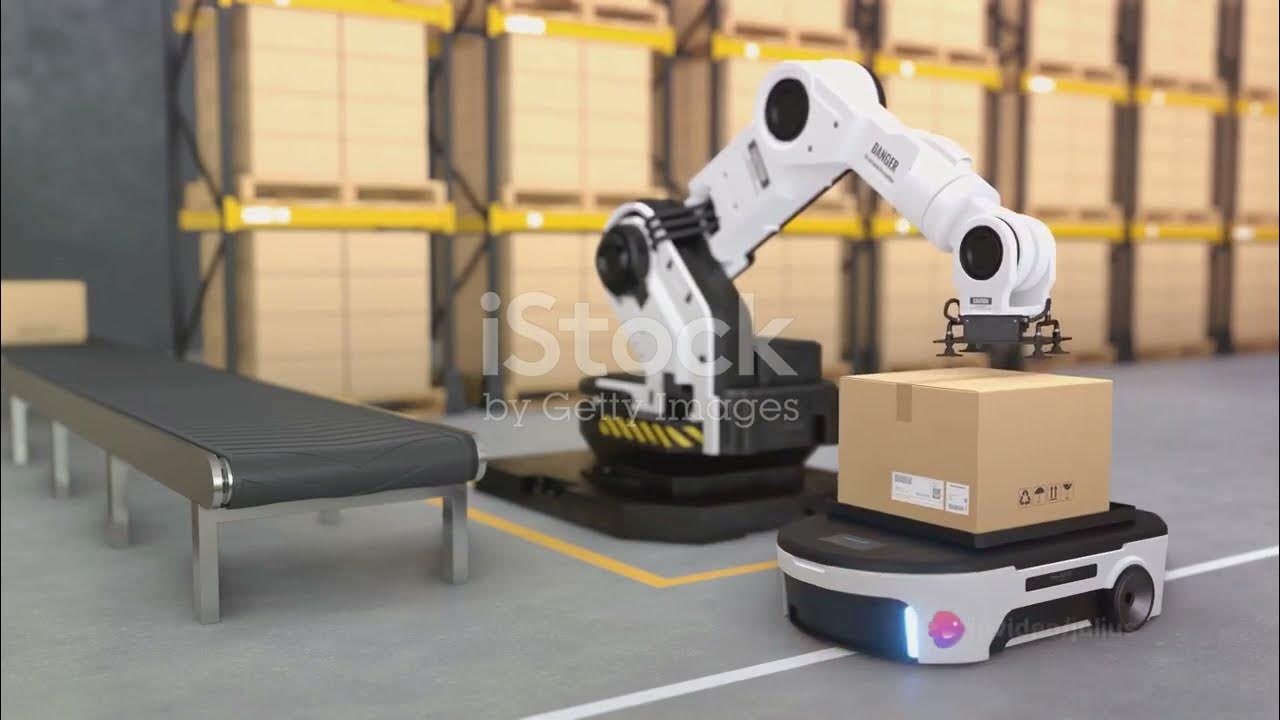Robotics Sensors 2 : A Deep Dive into Robotics Sensors
Summary
TLDRThis script explores the intricate world of robotic perception, highlighting the array of sensors that enable robots to interact with their environment. From temperature and chemical sensors that monitor conditions and detect hazards, to biometric sensors that measure human vitals, each type plays a unique role. Range sensors provide depth perception, humidity sensors gauge moisture levels, and audio sensors offer a sense of hearing. Touch sensors, especially, facilitate human-robot collaboration. Together, these sensors empower robots with a comprehensive understanding of their surroundings, allowing for autonomous and meaningful interaction with the world.
Takeaways
- 🌡️ Temperature sensors act as a robot's thermometer, monitoring ambient conditions to prevent overheating.
- 👃 Gas and chemical sensors serve as a robot's nose, detecting specific gases or chemicals for air quality and hazardous material detection.
- 💓 Biometric sensors measure physiological data like heart rate, useful in social and health-related robots for monitoring human health.
- 👀 Range sensors, including time of flight and infrared, provide precise distance measurements for spatial understanding and obstacle avoidance.
- 💧 Humidity sensors measure moisture levels, important for applications with moisture-sensitive materials to ensure safe operation.
- 👂 Sound and audio sensors allow robots to capture sound waves, perceive audio cues, and respond to spoken commands, giving them a sense of hearing.
- 👋 Touch and contact sensors detect physical contact, crucial for collaborative robotics and safe human-robot interaction.
- 🤖 An array of sensors gives robots a comprehensive understanding of their surroundings, enabling informed decision-making and autonomous behavior.
- 🧠 Sophisticated algorithms process the data from sensors, integrating it into the robot's control system for meaningful interaction with the environment.
- 🛠️ Sensors are essential components in robotics, acting as the eyes, ears, and skin that allow robots to perceive and interact with the world.
- 🌟 The script highlights the unsung role of sensors in robotics, emphasizing their importance in bringing robots closer to human-like interaction with the world.
Q & A
What is the primary function of temperature sensors in robots?
-Temperature sensors in robots act as a thermometer, gauging the ambient temperature and ensuring the robot operates within its optimal temperature range to prevent overheating and other potential issues.
How do gas and chemical sensors contribute to environmental safety?
-Gas and chemical sensors act like a robot's nose, detecting specific gases or chemicals in the environment. They are crucial for air quality monitoring and hazardous material detection, alerting humans to dangerous substances that may be undetectable to the human senses.
What role do biometric sensors play in robots?
-Biometric sensors in robots are similar to a pulse meter, measuring physiological data such as heart rate, temperature, and perspiration. They are used in social robots or health-related applications to monitor and maintain human health.
How do range sensors help robots navigate their surroundings?
-Range sensors, including time of flight and infrared range sensors, help robots understand their spatial surroundings by measuring distances to objects. They enable robots to avoid obstacles and navigate effectively.
What is the significance of humidity sensors in certain applications?
-Humidity sensors measure moisture levels in the environment, which is crucial for applications involving materials sensitive to moisture. This ensures that robots can operate safely and effectively in various conditions.
How do sound and audio sensors provide robots with a sense of hearing?
-Sound and audio sensors allow robots to capture sound waves, perceive audio cues, and respond to spoken commands, essentially giving them a sense of hearing and enabling them to interact with their environment through audio cues.
What is the purpose of touch and contact sensors in collaborative robotics?
-Touch and contact sensors function as a robot's sense of touch, detecting physical contact. They are particularly useful in collaborative robotics and human-robot interaction, allowing for safe and efficient teamwork.
How do sensors contribute to a robot's autonomous behavior?
-Sensors provide robots with a comprehensive understanding of their surroundings. The data they collect is processed using sophisticated algorithms and integrated into the robot's control system, facilitating informed decision-making and autonomous behavior.
What is the importance of sensor data processing in robots?
-Sensor data processing is crucial as it allows the robot to interpret the information gathered by its sensors. This interpretation enables the robot to make informed decisions and interact with its environment in a meaningful and effective way.
How do robots use a combination of sensors to enhance their perception?
-Robots use a combination of sensors to create a multi-sensory perception of their environment. This array of sensors, working together, provides a more complete and nuanced understanding of the world around them, similar to how humans perceive and interact with their surroundings.
What is the role of unsung heroes in robotics as mentioned in the script?
-The term 'unsung heroes' refers to the sensors that work tirelessly in the background of robots, enabling them to perceive, understand, and navigate their world. These sensors are essential but often not recognized for their contribution to the functionality of robots.
Outlines

このセクションは有料ユーザー限定です。 アクセスするには、アップグレードをお願いします。
今すぐアップグレードMindmap

このセクションは有料ユーザー限定です。 アクセスするには、アップグレードをお願いします。
今すぐアップグレードKeywords

このセクションは有料ユーザー限定です。 アクセスするには、アップグレードをお願いします。
今すぐアップグレードHighlights

このセクションは有料ユーザー限定です。 アクセスするには、アップグレードをお願いします。
今すぐアップグレードTranscripts

このセクションは有料ユーザー限定です。 アクセスするには、アップグレードをお願いします。
今すぐアップグレード5.0 / 5 (0 votes)






